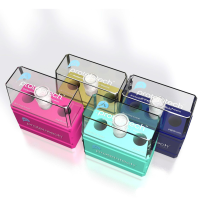The Use of Resolvases T4 Endonuclease VII and T7 Endonuclease I in Mutation Detection
互联网
1113
The use of resolvase enzymes to detect mutations (1 ) was developed in response to the demand for a method that could screen kilobase lengths of DNA for single nucleotide changes and small insertions and deletions. The method is a more simple, nontoxic alternative to the chemical cleavage of the mismatch (CCM) method (2 ) and as such, the techniques proceed along similar lines; heteroduplex formation then mismatch cleavage then electrophoresis to visualize the reaction products. Both techniques use as substrate, heteroduplexes generated by the melting and reannealing of query and control DNA, usually polymerase chain reaction (PCR) products, in the same tube. If the sequence of the two original DNA species differ at any nucleotide, then heteroduplex species will be generated with a base-pair mismatch at that position (see Fig. 1 ). These mismatches can be bound and the DNA cleaved by at least two resolvase enzymes, T4 endonuclease VII (1 ) and T7 endonuclease I (3 ), both bacteriophage enzymes with similar in vivo functions. The one-step binding and cleavage reaction replace the two-step CCM procedure that uses different chemicals in each stage that are not active in the same buffer and thus require a clean-up step in between. Another advantage of using resolvases rather than chemicals for this procedure is that the one enzyme can recognize all eight types of mismatches (a/a, t/t, c/c, g/g, a/g, t/g, a/c, t/c) (4 ), as well as small loops generated when the query DNA used to form the heteroduplex









